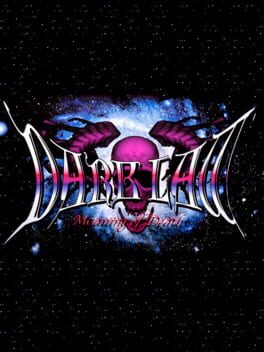

Dark Law is a Role-Playing game, developed by SAS Sakata and published by ASCII Entertainment, which was released in Japan in 1997.
Reviews View More
Game Review - originally written by Gideon Zhi (founder of Aeon Genesis Translation Group)
Dark Law is the sequel to Dark Lord, the third part in a trilogy of tangentially-related games (think Soul Blazer/Illusion of Gaia/Terranigma.) Whereas the second game in the series, Wizap!, kind of stinks, Dark Law is fully of all kinds of awesome. Combat plays similarly to Treasure Hunter G, if you´ve played that, except it´s not grid based - you have a power bar that decreases as you move, and the more it has left in it the more attacks you can make in a single turn. It´s also got multiple endings!
Dark Law is essentially the Japanese interpretation of the pencil-and-paper RPG into a videogame format. The focus is rather heavy on exploration and light on combat, with copious amounts of storytelling thrown in for good measure. It, like Dark Lord before it, is told through a series of short stories (”Scenarios”) which tie together by the final conclusion. It’s a pretty cool game, on the whole.
Dark Law is the sequel to Dark Lord, the third part in a trilogy of tangentially-related games (think Soul Blazer/Illusion of Gaia/Terranigma.) Whereas the second game in the series, Wizap!, kind of stinks, Dark Law is fully of all kinds of awesome. Combat plays similarly to Treasure Hunter G, if you´ve played that, except it´s not grid based - you have a power bar that decreases as you move, and the more it has left in it the more attacks you can make in a single turn. It´s also got multiple endings!
Dark Law is essentially the Japanese interpretation of the pencil-and-paper RPG into a videogame format. The focus is rather heavy on exploration and light on combat, with copious amounts of storytelling thrown in for good measure. It, like Dark Lord before it, is told through a series of short stories (”Scenarios”) which tie together by the final conclusion. It’s a pretty cool game, on the whole.
Dark Law, SAS Sakata's late-SNES RPG, went even further than SaGa in its CRPG-leaning gameplay: Character creation (of 1-4 party members) with stat-assignment, narration, minimal guidance, modest character progression (via quests as well as battles), job classes + abilities, complex magic-learning, etc. Rounding out the format is a non-linear structure made up of brief, gated scenarios and a menu-based hub town, alongside tactical AP-driven fights that use areas as battle maps (almost like Arc the Lad before them). Alas, their penchant for backtracking, talking to and examining everything to make progress (sometimes in a specific order and sometimes in multiples) gets rather irritating, and the level prerequisites of quests lead to stale grind-sessions within its central dungeon. Their attempt to wed CRPG traits with the storytelling, graphics and dungeons of JRPGs is admirable, but the end result is often either plodding or exasperating.
To their credit, a number of heavy moments here evoke the tragic firepower of the past. By putting the tagline into focus, its best scenes achieve emotional peaks (or more appropriately - nadirs) that wouldn't be felt again until Valkyrie Profile.
To their credit, a number of heavy moments here evoke the tragic firepower of the past. By putting the tagline into focus, its best scenes achieve emotional peaks (or more appropriately - nadirs) that wouldn't be felt again until Valkyrie Profile.
